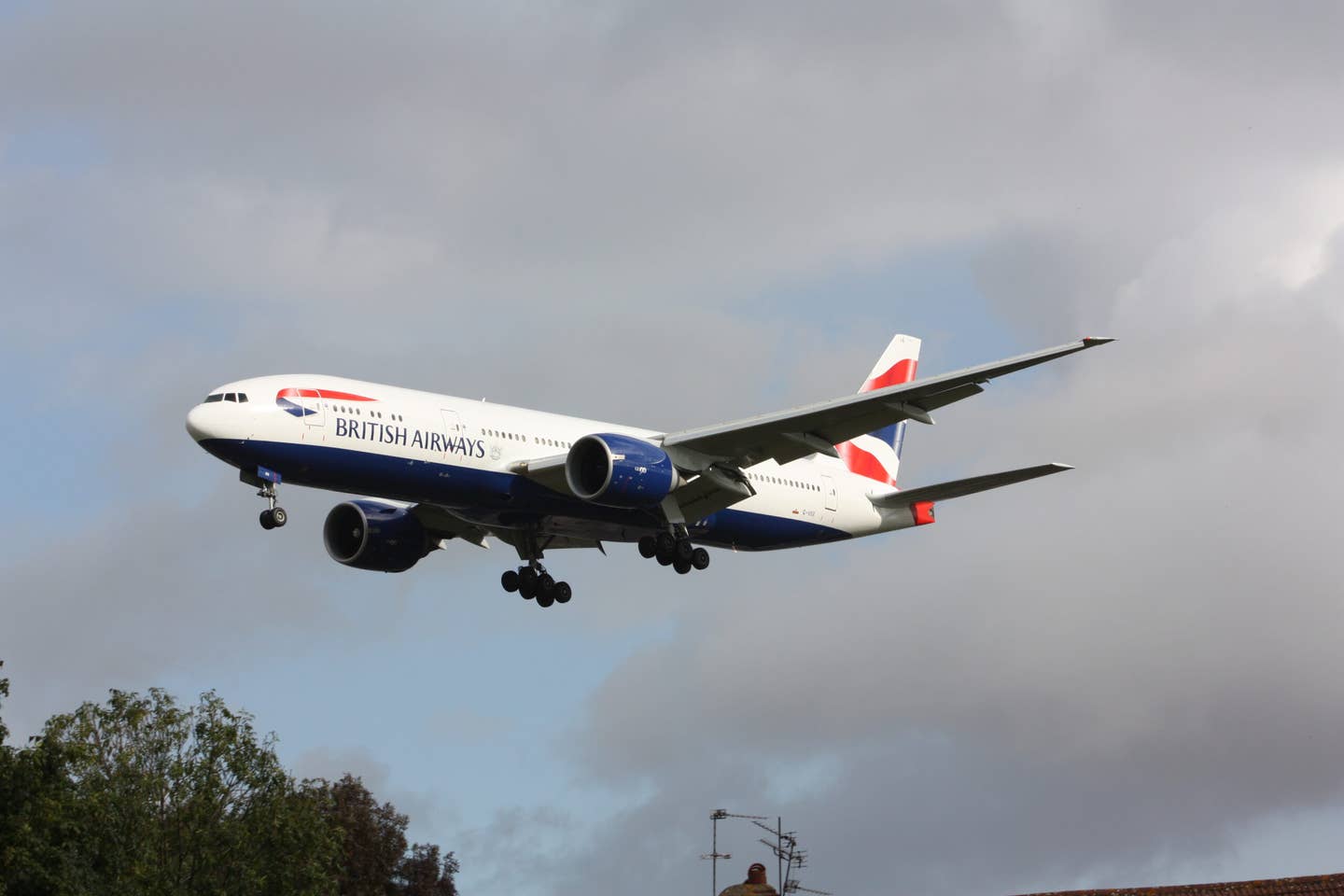
A British Airways 777 lands at Heathrow Airport, where improvements to ATC have led to reductions in holding times and carbon emissions. Wikimedia Commons/MercerMJ
Eighteen months ago NATS, the UK’s ATC provider, announced implementation of time-based separation standards at London Heathrow Airport, designed to increase the arrival rate at Europe’s busiest hub airport. NATS says an effort it began in 2014 called XMAN, in which ATC in the UK coordinates with controllers in France, the Netherlands and Ireland, is also reducing the time aircraft spend burning holes in the sky around London awaiting their turn to land.
Average holding times in 2014, according to NATS, were about 8.5 minutes. That figure dropped to an average of just over 7.5 minutes in 2016 with a low of 6.5 minutes in August.
While one minute might seem inconsequential, multiplied by the thousands of flights each year that use Heathrow, the improvement translates into more than 3,000 hours aircraft don’t spend flying circles in the sky and, of course, burning fuel and contributing to carbon emissions and noise.
NATS estimates the reduction in holding has reduced emissions of carbon dioxide by more than 35,000 tons, equivalent to more than 11,000 tons of fuel that were not consumed.

Sign-up for newsletters & special offers!
Get the latest FLYING stories & special offers delivered directly to your inbox






